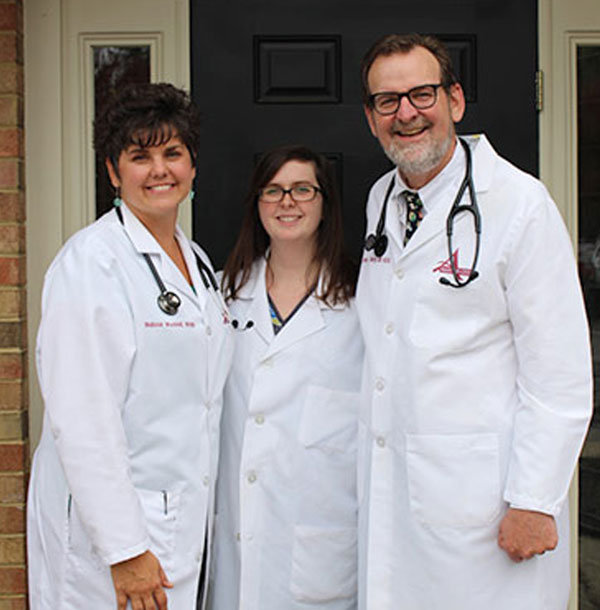What is cervical dysplasia?
Cervical dysplasia is the presence of abnormal cells on the cervix. It can range from mild to severe. Dysplasia occurs in females age 15 and older, and most often in those ages 25 to 35. Another term for cervical dysplasia is cervical intraepithelial neoplasia, or CIN.
Dysplasia is not cancer, but it can become cancer of the cervix if it is not treated.
How does it occur?
There is an association with human papillomavirus (HPV). This virus is usually received from sexual intercourse, but can in rare instances, be acquired from skin-to-skin contact.
You have a greater risk for cervical dysplasia if:
- You had sexual intercourse before the age of 18.
- You have had more than 2 sex partners.
- You smoke.
- You have had genital warts, genital herpes, or HIV/AIDS.
- You have not had enough folic acid in your diet.

What are the symptoms?
Cervical dysplasia usually does not cause symptoms. Sometimes it causes bleeding during or after sexual intercourse.
How is it diagnosed?
Cervical dysplasia is diagnosed by a simple, painless test called a Pap Smear test. To do a Pap Smear test, Dr. Hardy or the Nurse Practitioner will swab your cervix and cervical canal with a long cotton swab, brush, or wooden stick. Cells from the cervix are sent to a lab to be viewed under a microscope. The Pap Smear test is done in the office often as part of your annual exam.
If your Pap Smear tests results are abnormal, you will need to have a colposcopy. For this procedure Dr. Hardy uses a colposcope (an instrument with a magnifying lens) that is placed at the opening of the vagina and used to look closely at the cervix. He may need to take small samples of any tissue that appears abnormal and send them to the lab for evaluation. The removal of this sample is called a biopsy.
How is it treated?
It is very important to have dysplasia treated to help stop it from becoming cervical cancer. The specific treatment may depend on whether the dysplasia is mild, moderate, or severe.
Mild cervical dysplasia, also called CIN 1, often goes away without treatment. If you have mild dysplasia, you will need another Pap Smear test in 6 months. For every abnormal Pap Smear test, you will have to repeat the colposcopy. Once you have had 2 normal Pap Smear tests, you may then return to yearly Pap Smears.
If you have moderate dysplasia, called CIN 2, Dr. Hardy may freeze, burn, or use a laser to destroy the abnormal tissue. The abnormal tissue can also be removed with a thin wire loop attached to an electrical unit. This is called the loop electrosurgical excisional procedure (LEEP). These procedures can be done in the office. You will need to have a Pap Smear test every 4 months for the first year and then every 6 months for the second year. If all tests are normal, then you may return to yearly testing.
For severe dysplasia, called CIN 3, Dr. Hardy will do a cone biopsy, which is the removal of a cone-shaped piece of the cervix. This procedure is also called conization of the cervix. It removes the tissue containing abnormal cells. Dr. Hardy can cut the tissue out with a surgical knife, cautery (burning tool), laser, or wire loop. If the procedure is done with a knife or laser, it is usually done in an operating room. The tissue removed is examined in the lab to check for cancer. If no cancer is found, you will have Pap Smear tests every 4 months for the first year and then every 6 months for the second year.
Very few women have trouble getting pregnant or have miscarriages as a result of any of these treatments, including cone biopsies. If you become pregnant and have had a cone biopsy, tell your prenatal care provider about it. Most women who have had a cone biopsy are able to become pregnant and carry the baby to term without problems.
How can I take care of myself?
Making sure that you keep all follow up Pap Smear tests will help us check for recurrence early. Early detection can often allow us to remove the abnormal tissue before becoming cancerous.
How can I help prevent cervical dysplasia?
- Do not have sex, or practice safe sex by using latex or polyurethane condoms.
- If you are having sex, have just one partner who is not sexually active with anyone else.
- Avoid sexual intercourse until you are 18 or older.
- Do not smoke. Avoid breathing smoke from other people’s cigarettes.
- Try to eat foods that contain folic acid. Such foods include black-eyed peas, chickpeas, chicken liver, oranges, brewer’s yeast, and spinach.

